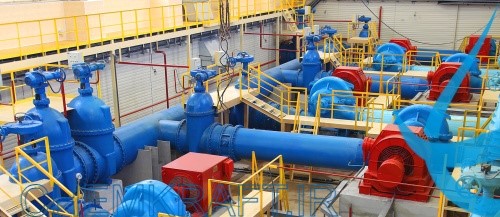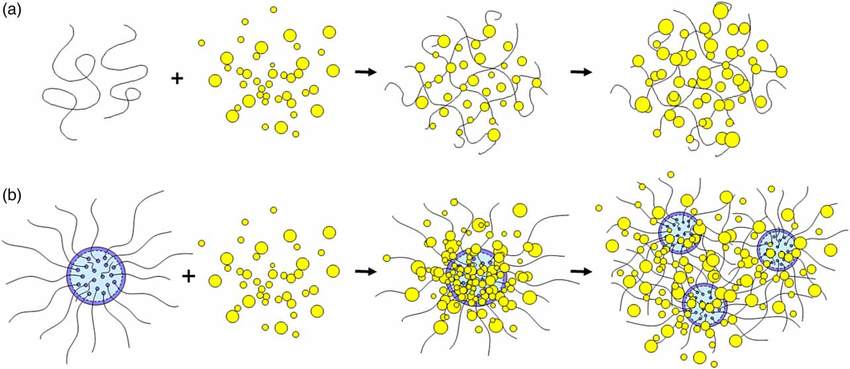1. Introduction to Brine Solutions and their Importance in Caustic Soda Production
Brine solutions play a vital role in the production of caustic soda, a chemical compound widely used in various industries. These solutions, primarily composed of sodium chloride and water, require thorough purification to meet the stringent standards necessary for caustic soda production. The purification process involves the removal of impurities, both suspended and dissolved, to ensure the quality and integrity of the final product. This article delves into the examination of water treatment processes employed to purify brine solutions fundamentally used in caustic soda production. By exploring pre-treatment, desalination methods, dissolved impurity removal techniques, pH adjustment, and post-treatment processes, we aim to shed light on the crucial steps involved in transforming brine solutions into high-quality feedstock for caustic soda manufacturing.
1. Introduction to Brine Solutions and their Importance in Caustic Soda Production
1.1 What are Brine Solutions?
Brine solutions are salty water solutions that contain a high concentration of salt, typically sodium chloride. They can be found naturally in saltwater bodies such as salt lakes, salt mines, and seawater.
1.2 Significance of Brine Solutions in Caustic Soda Production
Brine solutions play a crucial role in the production of caustic soda, also known as sodium hydroxide. Caustic soda is a versatile chemical used in various industries, including paper manufacturing, textiles, and water treatment. It is predominantly produced through the electrolysis of brine solutions, which provides a source of sodium ions.
2. Overview of Water Treatment Processes for Brine Solutions
2.1 Why Water Treatment is Essential for Brine Solutions?
Water treatment is essential for brine solutions to ensure the removal of impurities and contaminants that can negatively impact the production process and the quality of the final product, caustic soda. Impurities in brine solutions can lead to equipment corrosion, decrease the efficiency of the production process, and affect the purity of the caustic soda.
2.2 Key Objectives of Water Treatment Processes
The main objectives of water treatment processes for brine solutions are to remove suspended impurities, reduce the concentration of dissolved salts, and improve the overall quality of the solution. By achieving these objectives, the treatment processes ensure the production of high-quality caustic soda with minimal impurities.
3. Pre-Treatment of Brine Solutions: Filtration and Removal of Suspended Impurities
3.1 Importance of Pre-Treatment
Pre-treatment is a crucial step in the water treatment process for brine solutions. It involves the removal of suspended impurities such as sand, silt, and debris that can clog equipment, cause fouling, and hinder the efficiency of subsequent treatment processes. By removing these impurities, pre-treatment helps to protect downstream equipment and optimize the overall treatment process.
3.2 Filtration Methods for Suspended Impurity Removal
Various filtration methods are employed for the removal of suspended impurities from brine solutions. These can include mechanical filtration, such as sand filters and cartridge filters, as well as advanced techniques like membrane filtration, which use porous membranes to separate impurities based on size.
3.3 Challenges and Considerations in Pre-Treatment
One of the challenges in pre-treating brine solutions is the high salinity, which can affect the efficiency of filtration processes. Additional considerations include the selection of appropriate filtration media, managing the flow rate, and monitoring the performance of the filtration system to ensure optimal impurity removal.
4. Desalination Methods for Brine Solutions: Reverse Osmosis and Electrodialysis
4.1 Desalination Techniques in Water Treatment
Desalination techniques are employed to reduce the concentration of dissolved salts in brine solutions. These techniques play a crucial role in the purification of brine solutions for caustic soda production. Two commonly used desalination methods are reverse osmosis and electrodialysis.
4.2 Reverse Osmosis Process for Brine Solutions
Reverse osmosis utilizes a semi-permeable membrane to selectively remove salts from brine solutions. By applying pressure, water molecules are forced through the membrane, leaving behind the dissolved salts. This process effectively desalinates the brine solution, producing a purified water stream and a concentrated brine stream.
4.3 Electrodialysis Method for Desalinating Brine Solutions
Electrodialysis involves the use of ion-exchange membranes and an electric field to separate ions from brine solutions. The brine solution is passed through a series of alternating ion-exchange membranes, resulting in the separation of positive and negative ions. This process helps to reduce the salt concentration and produce a purified brine solution suitable for caustic soda production.
Remember, while understanding the technical aspects of water treatment processes is important, it’s also okay to take a moment to appreciate the irony of using water to remove water from brine solutions. Happy reading!. Conclusion
8.1 Summing it All Up
8.2 Cheers to Clean and Safe Brine Solutions!
5. Removal of Dissolved Impurities in Brine Solutions: Ion Exchange and Chemical Precipitation
5.1 Dissolved Impurities in Brine Solutions
Let’s face it, brine solutions can be a bit naughty sometimes. On their journey to becoming caustic soda, they pick up all sorts of dissolved impurities along the way. These impurities can include things like calcium, magnesium, and even some sneaky metals. But fear not, we’ve got just the tricks to kick those impurities to the curb.
5.2 Ion Exchange as a Dissolved Impurity Removal Method
Ion exchange is like magic for brine solutions. It works by swapping out the unwanted ions in the brine for some more desirable ones. Think of it like exchanging that mismatched sock for a brand new pair. The impurities are trapped in an ion exchange resin bed, and the brine flows through, leaving all that unwanted baggage behind. It’s like a spa treatment for brine solutions.
5.3 Chemical Precipitation Process for Removing Dissolved Impurities
Chemical precipitation sounds fancy, but it’s really just a way to make the impurities in brine solutions go “poof!” with a little help from some chemicals. By adding the right reagents, those impurities are turned into solid particles that can be easily filtered out. It’s like turning those pesky impurities into dust bunnies and sweeping them away. Goodbye, impurities!
—
6. pH Adjustment and Stabilization of Brine Solutions
6.1 Importance of pH Adjustment in Brine Solutions
pH adjustment may not sound like the most exciting part of the brine solution purification process, but it sure is important. Maintaining the right pH is like finding the perfect balance between sweet and salty. It ensures that the brine solutions are in the optimal conditions for further processing. Who knew pH could be such a big deal?
6.2 Methods for pH Adjustment and Stabilization
When it comes to adjusting pH, we’ve got a few tricks up our sleeves. We can use acids or bases to give those brine solutions a little nudge in the right direction. It’s like adding a squeeze of lemon juice to your tea or a pinch of salt to your fries. And to keep that pH steady, we can use buffers that act like the ultimate pH stabilizers. It’s like having a trusty sidekick to keep things in check.
—
7. Post-Treatment Processes for Brine Solutions: Disinfection and Final Quality Control
7.1 Ensuring Microbial Safety in Brine Solutions
Nobody likes unwelcome guests, especially when it comes to brine solutions. After all the hard work of removing impurities, we need to make sure those solutions are safe from any microbial party crashers. Microbes may be tiny, but they can cause big problems if left unchecked. It’s like superheroes fighting off the villains, but instead of capes, we’re armed with disinfectants.
7.2 Disinfection Techniques for Brine Solutions
Disinfection is the final showdown between cleanliness and those pesky microbes. We can use different techniques like chlorine or UV light to zap those little troublemakers. It’s like a high-tech battle of cleanliness. Think of it as the brine solution equivalent of a spa day, where those microbes don’t stand a chance.
7.3 Final Quality Control Measures
Last but not least, we need to make sure those brine solutions are squeaky clean and up to standard. Quality control measures are like the final checkpoint before those solutions can be deemed truly purified. It’s like a last-minute inspection to make sure everything is in tip-top shape. Cheers to clean and safe brine solutions!
8. Conclusion
8.1 Summing it All Up
In conclusion, purifying brine solutions for caustic soda production is no easy task, but with the right processes in place, we can turn that naughty brine into a clean and shiny solution. From removing dissolved impurities with ion exchange and chemical precipitation, to pH adjustment and stabilization, and finally ensuring microbial safety through disinfection and quality control measures, we’ve covered it all.
8.2 Cheers to Clean and Safe Brine Solutions!
So here’s to clean and safe brine solutions, the unsung heroes of caustic soda production. They may not get the spotlight, but we appreciate their hard work in making our lives better. So next time you see a bottle of caustic soda, give a little nod to those purified brine solutions. After all, they’ve been through quite the journey to get there.
In conclusion, the examination of water treatment processes employed to purify brine solutions for caustic soda production reveals the intricate steps necessary to ensure the quality and purity of the final product. By implementing effective pre-treatment methods, desalination techniques, dissolved impurity removal processes, pH adjustment, and post-treatment procedures, manufacturers can achieve the desired level of purity in brine solutions. Ongoing research and development in water treatment technology continue to drive advancements in this field, offering promising prospects for further enhancing the efficiency and sustainability of brine solution purification. As the demand for caustic soda continues to rise, understanding and optimizing these water treatment processes are essential for the continued success of the industry.
FAQ
1. Why is water treatment necessary for brine solutions used in caustic soda production?
Water treatment is essential for brine solutions in caustic soda production to remove impurities that can negatively impact the quality and performance of the final product. Impurities can affect the efficiency of chemical reactions and lead to equipment corrosion, ultimately affecting the overall production process.
2. What are the key challenges in purifying brine solutions for caustic soda production?
Purifying brine solutions for caustic soda production involves several challenges, such as the presence of suspended impurities, dissolved impurities, and the need for pH adjustment. Additionally, the treatment process needs to be efficient, cost-effective, and environmentally sustainable to meet regulatory requirements and industry standards.
3. What are the commonly used methods for desalinating brine solutions?
Two commonly used methods for desalinating brine solutions are reverse osmosis and electrodialysis. Reverse osmosis involves the use of a semi-permeable membrane to separate salts and impurities from the brine solution, while electrodialysis uses an electric field to selectively transport ions across ion-exchange membranes, effectively removing salts.
4. How is the quality of brine solutions ensured after the treatment process?
After the treatment process, the quality of brine solutions is ensured through post-treatment processes such as disinfection and final quality control measures. Disinfection techniques help eliminate any remaining microbial contaminants, while quality control measures involve rigorous testing and analysis to verify that the brine solution meets the required standards for caustic soda production.










